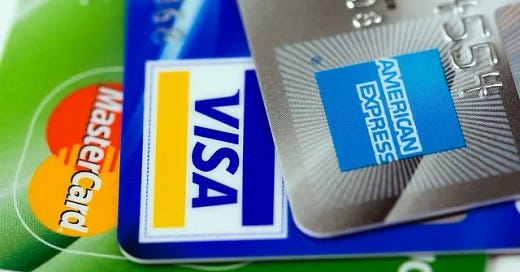American Express vs. Visa: Why They're Not Really Competitors (It's Not Just About the Fancy Cards!)
Ever found yourself pondering the credit card universe, wondering why American Express (Amex) and Visa seem to exist in parallel dimensions despite both being payment giants? You're not alone!
It's like Coke and Pepsi, but with more zeros and a lot more complexity.
So, buckle up for a fun-filled journey into the world of credit card economics, where we'll unravel the mystery of why Amex and Visa aren't the cutthroat rivals you might expect.
Different Business Models: The Core of the Matter
At first glance, Amex and Visa seem like two peas in a pod. They both offer shiny plastic cards that let you buy things without carrying wads of cash. But beneath the surface, their business models are vastly different.
Visa operates on an "open-loop" system. It's like a bustling city center, with numerous roads connecting various destinations. Visa doesn't issue cards itself; instead, it acts as the infrastructure that allows banks to issue Visa-branded cards and merchants to accept them. Visa provides the network and technology that enables these cards to work seamlessly at millions of stores worldwide. This open-loop system allows for wider acceptance and greater reach, making Visa the more ubiquitous payment network.
Amex, on the other hand, operates on a "closed-loop" system. It's like a self-sufficient, all-inclusive resort where everything is handled in-house. Amex is both the card issuer and the payment network. This means Amex controls the entire process, from creating the cards to processing the transactions. This closed-loop system gives Amex greater control over the customer experience, allowing them to offer more personalized services.
Quick reminder : Want to dives deep into the strategies I've used to navigate the market and achieve my own financial goals. Well, say no more and grab my book "Investing with Eagles." we’ve made it to the top 300 books on portfolio management and investment strategies and joined the Kindle subscription program, check it out on Amazon.
Who Pays the Piper? The Fee Fiesta
Now, let's talk about everyone's favorite topic: fees! Both Amex and Visa love them, but they collect them in different ways.
Visa's revenue model is primarily transaction-based. Every time you swipe your Visa card, a small percentage of the purchase amount goes to Visa as a transaction fee. These fees, though small individually, add up to substantial amounts given the massive volume of transactions Visa processes daily. Visa also charges fees to banks for using its network and accessing its services. In addition to transaction fees, Visa earns revenue from value-added services like fraud management, risk assessment, and consulting for financial institutions and merchants.
Amex, with its closed-loop system, has a more diverse revenue stream. It charges merchants higher fees than Visa , but it also makes money from cardholders through annual fees, interest on outstanding balances, and other charges. This diversified approach allows Amex to generate significant revenue despite lower transaction volume compared to Visa.
Both Amex and Visa rely on interchange fees, which are a significant component of their revenue. Interchange fees are charged to the merchant's bank by the cardholder's bank for each transaction. These fees are designed to cover the costs of processing transactions, managing risk, and providing rewards programs.




